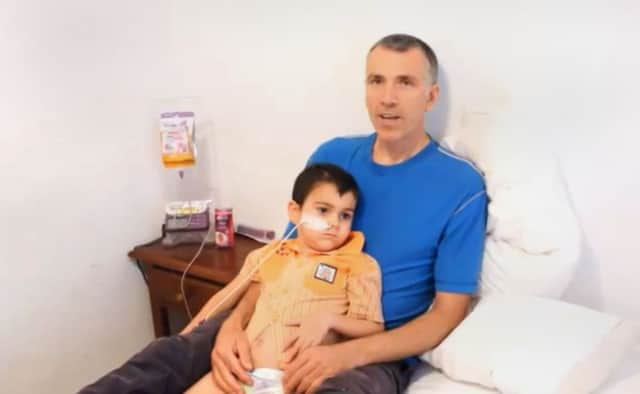Leaders: Let’s prioritise treatment not punishment


It sounds like a concatenation of misunderstandings and miscommunications, where people trying to achieve the same objective have wound up working against each other. This seems to be the only way of making sense of what looks, at best, a complete nonsense, at worst, a tragic mess.
Five-year-old Ashya has a brain tumour which was being treated at Southampton Hospital, a university hospital which routinely deals with difficult conditions and has doctors skilled in advanced techniques.
Advertisement
Hide AdAdvertisement
Hide AdThe hospital’s ability to care for Ashya does not look to be in doubt. But it does not have the equipment to deliver the proton beam treatment which his parents, after much researching, decided was the best way of saving their son. It is apparently as effective at killing tumours as conventional radiotherapy, but does much less damage to surrounding healthy tissue.
Whether the hospital doctors agreed or disagreed is not clear, but it is the case that this treatment is not available on Britain’s NHS except for reasonably small tumours around the eyes at one centre in England. It is, however, available in various European centres at somewhat less cost than the £100,000 generally quoted by American hospitals.
The parents decided they wanted Ashya to have this treatment. Whether they discussed this and how it might be obtained with the Southampton doctors again isn’t clear. But they evidently concluded that he was not going to get it if he stayed in the hospital.
The police were told by the hospital that because of potential battery failure in a piece of his equipment the parents also took, Ashya’s life was in grave danger. The police therefore had little option but to find him, a chase which the father, having apparently bought everything required, described as ridiculous.
Whether the hospital and/or the police misconstrued the fact that the parents were Jehovah’s Witnesses, a religion which forbids certain medical procedures, to mean that they were taking their son away to die in the arms of his family is also unclear.
Apparently, the family’s intention was to sell a property in Spain to pay for Ashya receiving the treatment in Prague. But now the law has intervened, the family is separated, and the parents are being treated as criminals.
This cannot be right. Mistakes may have been made by all concerned, but surely now the focus must now be on helping the family through this traumatic ordeal and securing the best treatment for Ashya.
Sitting on a real Glasgow 2014 legacy
the Commonwealth Games legacy of enhanced images of Glasgow and Scotland around the world is a good thing but may well feel a bit ephemeral to many people, especially the disadvantaged who may not have been able to afford to see much of the competition.
Advertisement
Hide AdAdvertisement
Hide AdSo it’s a great idea to make the furniture used in the athletes’ village available to poorer people. Some 60,000 items – beds, sofas, wardrobes, tables, chairs, cushions – have been emptied from the village and are being taken by Glasgow Housing Association to a storage facility, where they are being distributed to folk who need them.
This is the very best of practical legacies being given to the people who will appreciate it most.
Apart from just being useful, the items have the cachet of having being used by some of the world’s top athletes – and not just at the Commonwealth Games; some of them were also in use in the London 2012 Olympic village. Great fun, surely, for folk who don’t get the best deal in life to be able to say they own a piece of Glasgow’s and Scotland’s history.
And the thought of that may add to the general inspiration to people to get into sport that it is hoped the Games provided by motivating some of the furniture’s new owners to get more physically active.
That may be a stretch (if you will pardon the pun), but even if all it does is give people a nicer-looking home and a warmer feeling about the attitude of those in charge of major projects, and a feeling of having been thought about and included in a small but very practical way, then it is worth doing.
And, who knows, Usain Bolt’s chair might deliver another, Scottish, winner.